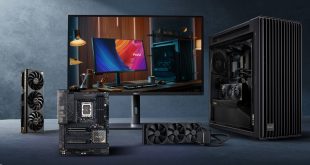To test all of the SilentiumPC coolers we have, we devised an easily repeatable test with no variables other than the coolers themselves. This ensures that all of the figures are directly comparable.
Test rig
Using an open-air test bench, we deployed an Intel Core i7-4790K plugged into a Gigabyte Z97X-SOC Force motherboard. Alongside this was 16GB of 2400MHz Corsair Vengeance DDR3, as well as a 120GB OCZ Trion 150 SSD. Powering everything was a Corsair CX500M.
The test process
Testing each cooler involved taking a total of 4 temperature readings per cooler. First, we measured the idle temperature of the i7-4790K at stock speeds (turbo boost disabled), before measuring its temperature under load at stock speeds. Next, we overclocked the CPU to 4.5GHz using a 1.3 Vcore, ensuring greater heat output. In its overclocked state we then measured the idle and load temperatures of the CPU again.
To ward off potential comments or questions, we know 4.5GHz using a 1.3 Vcore is a ‘bad' overclock – this particular CPU could reach that frequency at closer to 1.2 on the Vcore, which is more efficient. That is not the point, however. We are trying to stress the coolers to see how they deal with excess heat, hence the high Vcore.
Each cooler's fan was plugged directly into the motherboard using the CPU_Fan header, while the CPU_Opt header was also used when testing the Grandis – the only cooler on test with dual-fans.
An idle reading comes from leaving Windows on the desktop for 15 minutes. A load reading comes from running Prime95's (version 26.6) Small FFTs test for 15 minutes – enough time for temperatures to plateau.
Noise output
Unfortunately I was unable to properly measure the sound output of the coolers using a digital sound meter. This is because I am based in London (with high ambient noise levels) while things are compounded by the fact that building works are current taking place directly next door to me. Using a sound meter then would not be a fair test as there are variables out of my control. However, for each cooler I will try my best to subjectively describe the noise output in a helpful manner.
A note on cooler installation
All comments about the ease (or lack of) of installing the coolers refers to installing them on a LGA 1150 motherboard. LGA 2011 or AMD installation may well be very similar, but we cannot comment on this.
Be sure to check out our sponsors store EKWB here
 KitGuru KitGuru.net – Tech News | Hardware News | Hardware Reviews | IOS | Mobile | Gaming | Graphics Cards
KitGuru KitGuru.net – Tech News | Hardware News | Hardware Reviews | IOS | Mobile | Gaming | Graphics Cards


